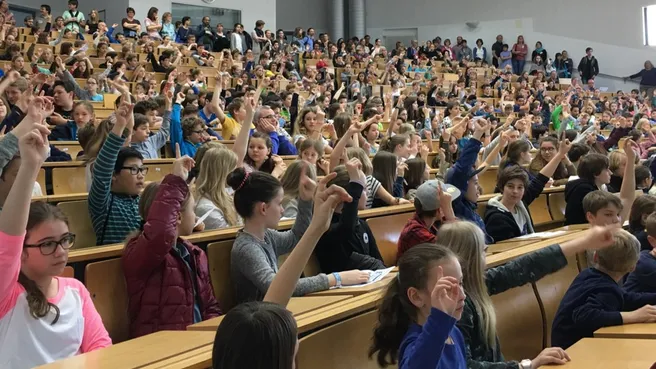Outreach Activities
Mathematics is a living subject – as our outreach activities show: In the school portal, you will find many offers for students and teachers. The ix-quadrat hands-on mathematics exhibition is aimed at young and old and shows that mathematics can be "grasped". The news from the Department of Mathematics will show you where mathematics is alive.
News from the Department of Mathematics
Department Colloquium Summer 2024
Department, Colloquium |
Lecturedate: Wednesday, 10 July 2024
Inaugural lecture
10. Juli, 16-17 Uhr: Johannes Zimmer (TUM)
Organisator:innen:
Particles, partial differential equations and the arrow of time

Johannes Zimmer (TUM): Mittwoch, 10. Juli 16:00 - 17:00 Uhr
Many processes in nature can be modeled on different scales; for
example with 'high resolution' using particles or 'zoomed out' using
partial differential equations (PDEs). One interest covered in this talk is
the derivation of PDEs describing the collective behaviour of (infinitely)
many particles: Can we derive the PDE? Can we machine learn the PDE from
particle data? It turns out that it is often important to understand the
structure of the equations; on the level of PDEs, a thermodynamic structure
based on energy and entropy is very helpful and will be described. The arrow
of time will play a central role: Small-scale models (of particle type) are
often can be reversible in time, while the large-scale description (of PDE type)
is irreversible. This seems at first puzzling, as the two models describe the
same system. We will discuss some mathematical approaches to understand this.

